Gray is the color when you need one background that can be modified into practically any shade for your studio portrait photography sessions. It can be made to look dark black or pure white—or with the help of some gels be converted into any number of funky shades you may fancy. In this quick video tutorial Gavin Hoey from shows us how:
Photographers are often hard-pressed by the kind of equipment that they have to work with. Sometimes it’s not even about the equipment but the tiny space that they have to work from, which limits their choice of equipment, props, and background.
For this demonstration Hoey, working from a small 16 x 25 foot studio, uses a single gray background for all his portrait shots. Applying simple rules of lighting and a few props and gels, he created four distinct looks.
Simple Gray Background
For the first shot, for the natural gray look, Hoey places the model close to the wall and fires a single StreakLight, through a softbox, toward the model. This is the test shot:

Test shot with the gray background
To perfect the look, Hoey next puts a grid on top of the softbox and asks the model to step further back against the wall while bringing the light right up to her. This is to ensure that the light is more directional and the exposure on the model and the background wall is identical.

Gray background with grid
Pure Black Background with a Gray Backdrop
For the pure black look, Hoey conjures the Inverse Square Law. Basically, the further away the background is from the light source, the darker it will be. So, Hoey asks the model to, you guessed it right, step away from the wall. The light was placed very close to the model.

The pure black look
Washed Out White Background with a Gray Backdrop
To make the background go pure white is a challenge. This cannot be done using a single light. Hoey brings in another light, which is carefully hidden behind the model and facing the background. Be careful not to overexpose with the background light or the light bouncing off of the wall will make the hair appear burnt-out.

The pure white look
Colorful Background with a Gray Backdrop
For the funky look Hoey brings in some gels. A red and a blue combine together to create purple. With the gels popped onto the background light, Hoey meters the background light at f/11.

With the background light gelled
To spice up the scene and make it more interesting Hoey brings in a prop.

The final look
Tip: Make sure you meter the light each time you change the position of the model or use gels, etc.
So, there you have it. A single versatile background and four distinct looks for your portrait sessions!
Like This Article?
Don't Miss The Next One!
Join over 100,000 photographers of all experience levels who receive our free photography tips and articles to stay current:

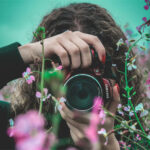
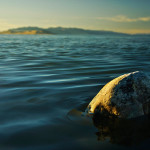
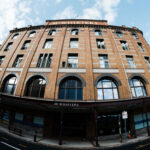
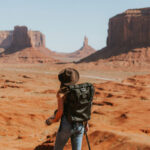
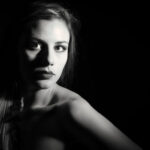
Leave a Reply